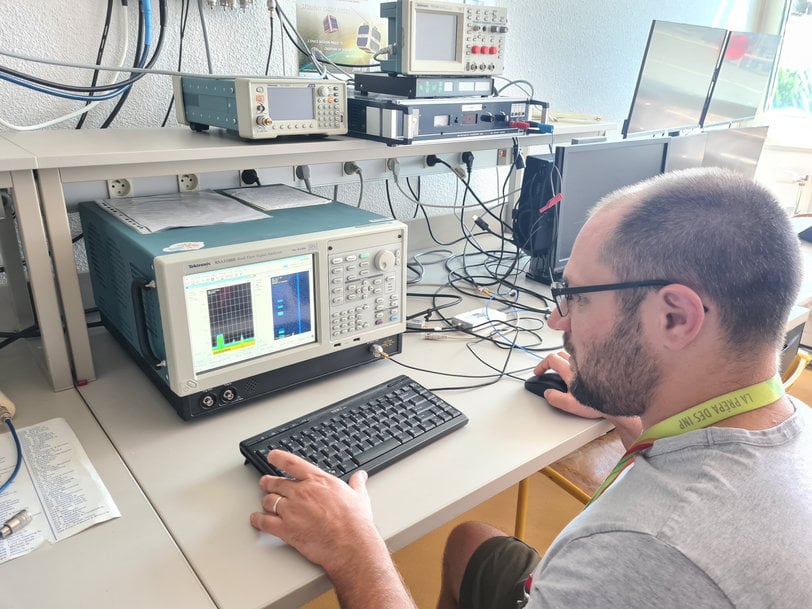electronics-journal.com
31
'21
Written on Modified on
Bordeaux INP’s ENSEIRB-MATMECA tests space communications with Tektronix spectrum analyzer
The National School of Electronics, Computer Science, Telecommunications, Mathematics and Mechanics (ENSEIRB-MATMECA) at Institut Polytechnique de Bordeaux (Bordeaux INP) has used a Tektronix RSA5000B spectrum analyzer to prove its base station can communicate with orbiting nanosatellites. Realtime measurements of signals help ensure communications with experimental balloons to prove satellite link.

ENSEIRB-MATMECA prides itself on being a public engineering school and trains engineers with strong scientific and technical skills and readies them to face major challenges in the digital world. The school conducted a series of experiments that used the LoRa Internet of Things (IoT) protocol to send and receive signals to and from a stratospheric balloon.
The project leaders are Anthony Ghiotto and Guillaume Ferré, both associate professors at Bordeaux INP ENSEIRB-MATMECA, and pursuing their research at the IMS Research Center. They comment, “The balloon project was designed to prove that our base station and protocol could communicate with the nanosatellites properly and that the signals were being received. This was important as we may need to reconfigure the satellite and bring data back down to Earth”.
The Tektronix RSA5000 spectrum analyzer was chosen for its ability to provide signals in real-time, allowing both associate professors and their students to discover the location of any issues and which flight direction would be affected.
“Short time duration signals couldn’t be measured with conventional spectrums,” says Ghiotto. “Conventional equipment could not be used to analyze such non-periodic signals. Tektronix equipment analyses the strengths of signals, which helps analyze the distance and check the flight path of the balloon, which could then be correlated with GPS data – other equipment could not offer this.”
The project team also used the analyzer to ensure the chosen frequency was free and there would be no interference from other signals that could compromise the project.
The first balloon experiment achieved signals over 200km, while, in theory, the signals can reach over 700km. An updated system is planned that will receive images in real-time. The project team also plans to share information with schools to show pupils what they are doing and help with their studies of metrology.
The first nanosatellite that the school will communicate with was launched in early May 2021. “We are currently finishing our base station in readiness to communicate with it,” says A. Ghiotto, “and the Tektronix analyzer will continue to be of great help in this.”
Maria Heriz, Vice President EMEA at Tektronix, comments, “At Tektronix, we pride ourselves on supporting innovation in engineering. We’re delighted that our RSA5000B Real Time Spectrum Analyzer was considered first choice by L’ENSEIRB-MATMECA and has helped in the real-world training of future engineers“.
www.uk.tek.com

